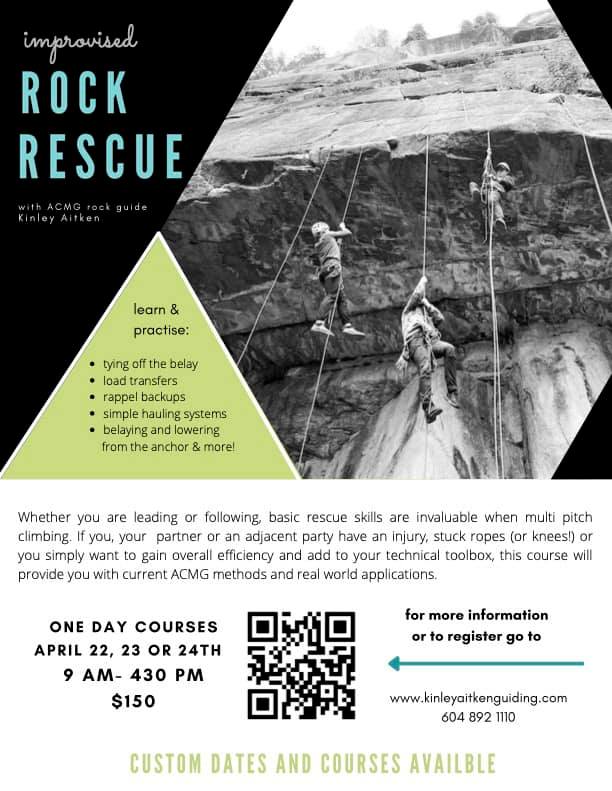Rock Climbing is Dangerous, Here’s a Course That Can Help
Squamish-based climber and guide Kinley Aitken is offering a rock rescue course that could save you or your partner's life
 Photo by: Brandon Pullan of Kinley Aitken on Mouses Tooth, B.C.
Photo by: Brandon Pullan of Kinley Aitken on Mouses Tooth, B.C.
Rock climbing can be dangerous and serious accidents happen every year, so you want to be prepared for the worst. Anything can happen that could lead to a mishap, from a hold breaking or gear pulling during to worsening conditions or even climbing into another team having an epic. Rescue techniques, like hauling, lowering, tandem-rappel and how to escape the belay are skills everyone should have.
Squamish-based ACMG rock climbing guide and veteran climber Kinley Aitken is offering three one-day rock rescue courses on the dates of April 22, 23 and 24. Aitken has climbed around the world, pushed hard trad grades, climbed The Nose on El Capitan in a day and has made first ascents in B.C.’s Waddington Range.
We recently touched base with her about the upcoming courses. Visit Aitken’s website here, or use the contact information from her poster below to book a course.
Why should climbers be prepared for a rescue scenario? Climbers can get themselves into some pretty wild places fairly quickly and with that comes some responsibility for one’s own climbing team and to potentially help those around them. Invariably accidents can happen and when climbers find themselves in situations where they might feel they ‘need’ to call for help, some advance planning and preparation as well as basic rope rescue skills can go a really long way.
Is this course meant for experienced climbers or can beginners sign up? No prior rescue experience is necessary to take part in this clinic, however the following skills are good to know in advance (but not required): building an anchor off two bolts, overhand and figure eight knots, using a prusik hitch. extra points if you have a guide style belay device and know how to use it.
What are some basics that you’ll teach? I’ll cover basics such as equipment, planning and preparation, tying off a belay device to go hands free, transferring loads, backing up a rappel, building a simple mechanical advantage hauling system, rappelling with an injured climber. There’s lots more we may cover if time allows.
What gear do folks need for the course? Folks at the minimum need a harness and helmet, a selection of locking and non locking carabiners, a belay device (auto blocking such as a Black Diamond guide ATC is ideal), a couple slings (120 and 240 cm are good lengths) and a rappel backup cord (1.5 meters of 6-7 mm cord or a ‘hollowblock’ work well). Bonus points if you have a 5 meter long piece of 7 mm cord (or two!).
Have you ever been involved in a rock climbing rescue? Yes, to varying degrees. One of the memorable ones was 500 metres up a wall in Madagascar. After breaking a hold and then my ankle, the self rescue was long and painful but used just the gear I had on me and called on these rescue skills for sure!
Follow Aitken on Instagram for course updates and inspiring climbing content.



